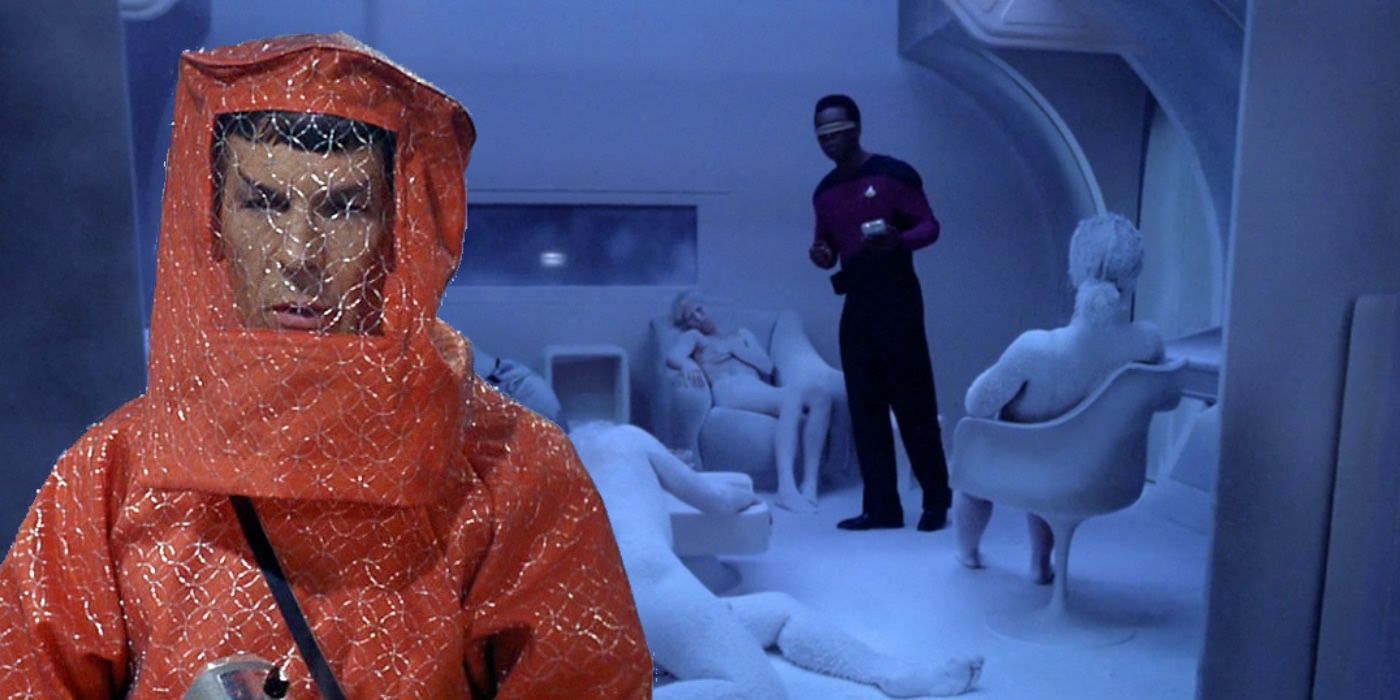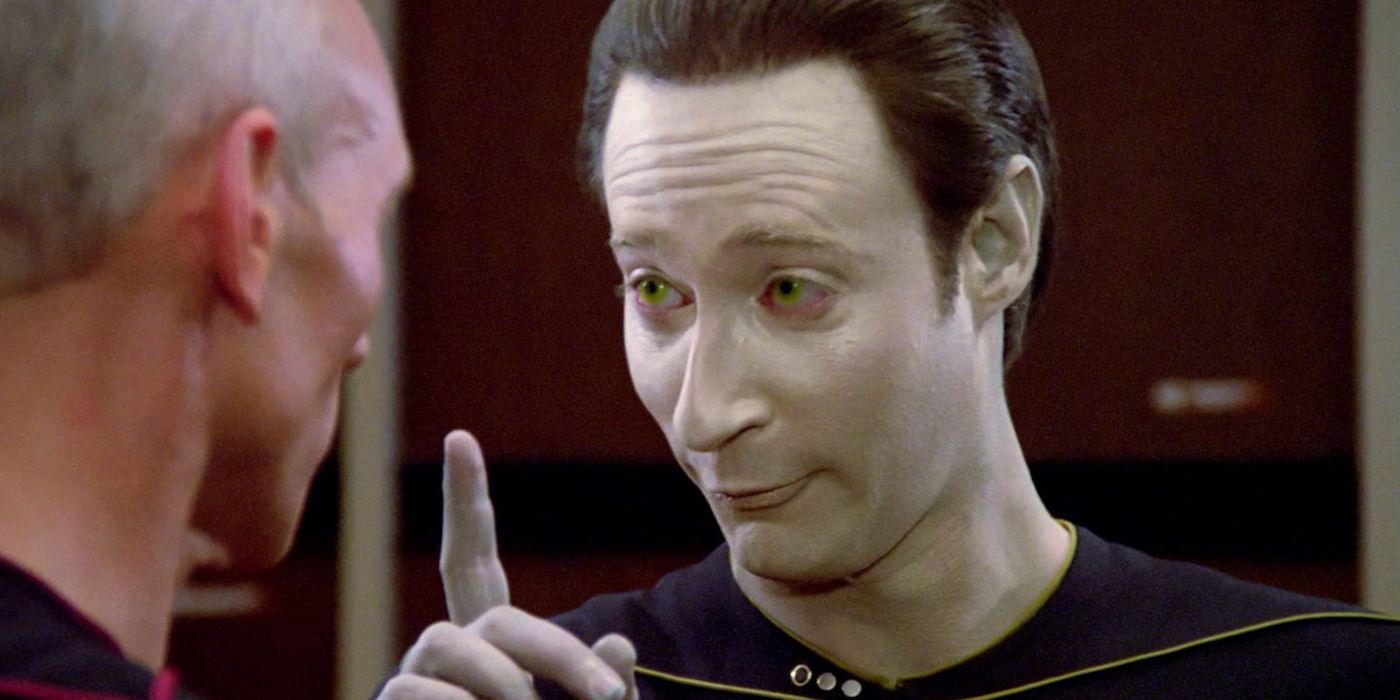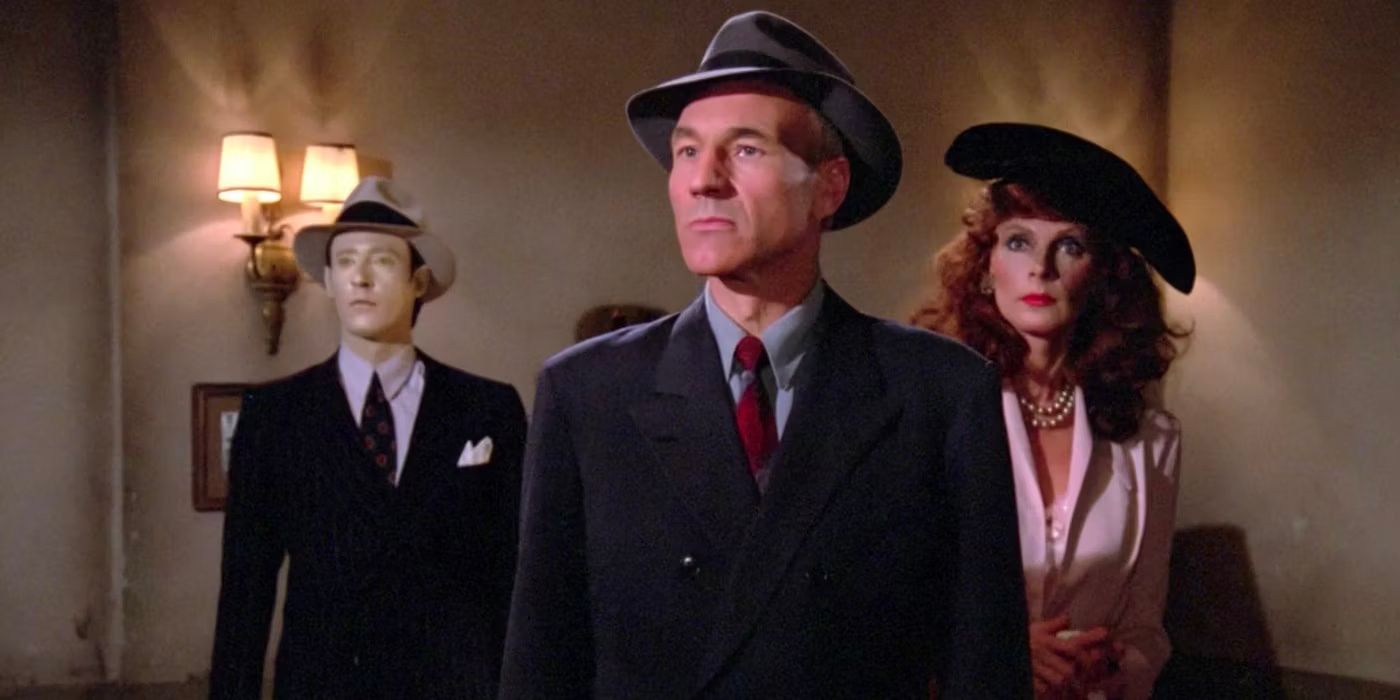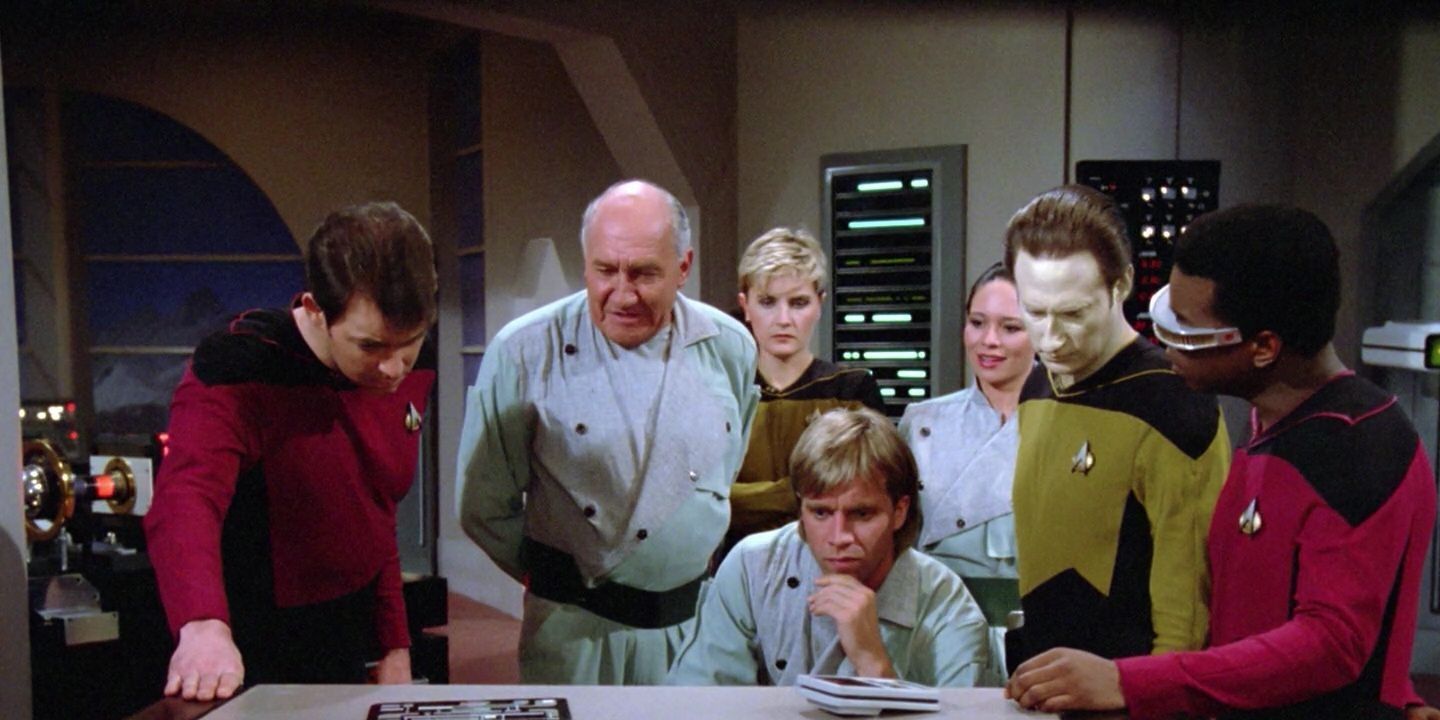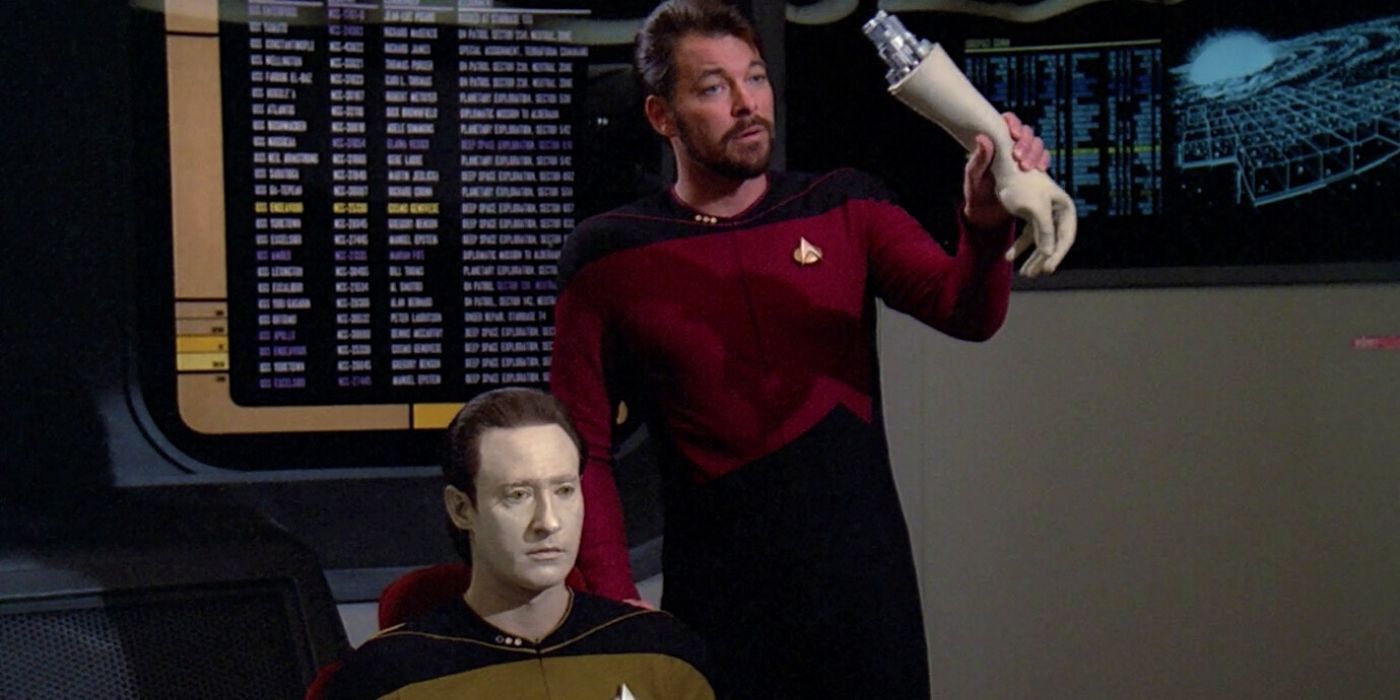Star Trek: The Next Generation offered a fresh take on the franchise, but it occasionally looked to Star Trek: The Original Series for inspiration. Especially in earlier seasons, Star Trek: The Next Generation struggled to find its identity, as it stood in the shadow of The Original Series. It didn't help matters that the show borrowed elements from classic episodes either. While Star Trek: The Next Generation did eventually find its rhythm and blaze its own trail, early episodes leaned heavily on what came before, to the detriment of its own stories, as those installments inspired by The Original Series always stuck out from the rest.
Available To Stream On Paramount+
With a small budget and massive expectations, Star Trek: The Next Generation was put under tremendous pressure to succeed, and season 1 had a rocky start. Many of the early episodes either copied plots from The Original Series or were recycled stories from the failed Star Trek show Phase II, which never saw the light of day. Most of the copied episodes weren't well-received, while the few that did hit were due to their originality and not the aspects copied from the older episodes. These Original Series-inspired episodes were a bridge to the past, but The Next Generation vastly improved once it started looking forward.
"The Naked Now" Was Based On "The Naked Time"
Star Trek: The Original Series was whimsical compared to later shows, and many of its more memorable plots involved elements of fantasy as opposed to hard-lined science fiction. Star Trek season 1, episode 4, "The Naked Time," was one such whimsical episode and involved the crew being infected by a disease that completely reduced their inhibitions. While "The Naked Time" gave fans Sulu's most famous moment involving his sword, its silliness has also come to define The Original Series as the "cheesy" Star Trek show compared to its successors. Aside from that, it also began Star Trek's long history of pandemic episodes, something that almost every subsequent series would copy.
Flash forward to Star Trek: The Next Generation season 1, episode 3, "The Naked Now," which looked to borrow the same disease from The Original Series and drop in the new crew. Similar events occurred, including a crew member attempting to seize control of the Enterprise, but the whimsy of the original was replaced by an unnecessary sexual component that led to an ill-advised relationship between Data and Tasha Yar. Considering how cheesy the Original Series episode was in retrospect, it made little sense for the supposedly new-and-improved Star Trek show to choose one of the most outlandish plots to copy.
"The Big Goodbye" Was Based On "A Piece Of The Action"
Captain Kirk and company were always discovering planets with strange connections to Earth's history, and in Star Trek season 2, episode 17, "A Piece of the Action," that history involved 1920s Chicago. While on the trail of a ship that had been missing for a century, the crew of the Enterprise stumbled across a planet that modeled itself around gangsters of the past. Despite the fact that the plot trampled on Star Trek's Prime Directive, the episode was engaging and well-written, and it was hilarious watching Kirk and Spock attempt to fit into the racketeering game. It also served another purpose by being extremely cheap to produce using pre-existing sets.
Star Trek: The Next Generation season 1, episode 12, "The Big Goodbye," borrowed its visual style from "A Piece of the Action," though it was actually one of the more original episodes to draw from The Original Series. While trapped in Captain Picard's 1940s detective holodeck program, Crusher, Picard, and Data are forced to complete the story with the safety turned off. Star Trek: The Next Generation's frequent holodeck malfunctions and accidents allowed more outlandish stories without real-world consequences, and the episode was one of the better uses of the technology. Dixon Hill would return in subsequent episodes, and it was the only Trek tale to win a Peabody Award.
"Home Soil" Was Based On "Devil In The Dark"
Star Trek's philosophy has grown and changed over the half-century since the Original Series first aired, but the first season episode "Devil in the Dark" has stood as a foundational pillar of what the franchise is all about. The Enterprise crew was called to a mining colony to investigate the mysterious death of workers, only to discover a silicon-based life form living within the rocks. The Horta was a frightening adversary, but the episode's shocking twist revealed that the alien possessed sentience and was merely defending itself. Though the Horta alien only appeared once in Star Trek, its plight spoke to the value of all life in the universe.
Contrasting The Original Series' hypothetical approach, Star Trek: The Next Generation season 1, episode 18, "Home Soil," tackled a similar plot from a strict sci-fi basis with mixed results. It followed the Enterprise crew as they discovered a crystal being responsible for the death of a crew member on a terraforming colony. Despite unabashedly borrowing from "Devil in the Dark," "Home Soil" suffered from being incredibly dry and too focused on technobabble. The heart of the plight of the Horta was replaced by an emotionless crystaline being, and though it tackled very similar philosophical problems, it stripped away the suspense that made "Devil in the Dark" so compelling to watch.
"Measure Of A Man" Was Based On "Court Martial"
While it wasn't one of the best episodes of Star Trek: The Original Series, "Court Martial," which aired as the 20th episode of season 1, introduced the courtroom drama to the franchise and was copied over and over to varying degrees of success. Kirk was put in the hot seat after the accidental death of a crew member led to his arrest and subsequent trial for negligence in the face of duty. Cheap to produce, "Court Martial" was essentially a bottle episode, but it introduced details about Kirk's past as well as established the name Starfleet as the governing body that the Enterprise served under.
In a rare example of the copy being superior to the original, Star Trek: The Next Generation season 2, episode 9, "Measure of a Man," took the courtroom drama and ran with it. After the cyberneticist Bruce Maddox arrived on the Enterprise and insisted on dismantling Data in order to study him, a tribunal court assembled to determine whether Data was a living being. Considered the first great episode of Star Trek: The Next Generation, "Measure of a Man" established a new philosophical identity for the show. Ironically, it was by copying an Original Series episode that Star Trek: The Next Generation finally found its place in the galaxy.

